|
Fable the Journey
Notorious for making grand promises that they fail to keep, the latest
offering from Lionhead studios is Fable: The Journey, a game that
promises to revolutionise gaming for the Kinect by offering up an
experience that isn’t either a dancing game or substandard shovel ware.
So, does this return to the world of Albion finally reach the lofty
goals of the developer or is their ambition still being hamstrung by
technological constraints?
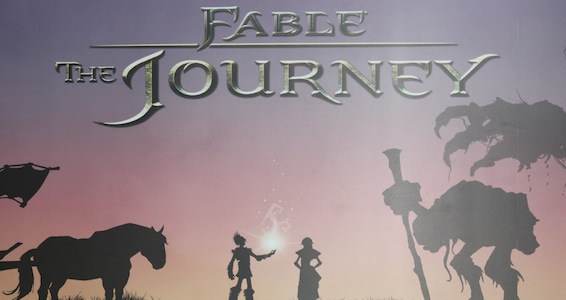
Slotting into continuity 50 years after ‘Fable 3’, Fable: The
Journey features Gabriel, your archetypical clumsy no-hoper and a
member of the nomadic Dweller tribe. Hopelessly separated from his group
by a freak accident, Gabriel finds himself tasked with saving the world
after running into series regular Theresa and acquiring a set of magic
gauntlets.
It turns out Theresa is being pursued by a malevolent corruption that
scorches all that falls before it. After an extremely close getaway,
Gabriel’s trusty steed Seren is critically injured. Hastily making a
deal to assist Theresa in her fight against The Corruption in exchange
for Seren’s life, Gabriel is thrust headfirst into the tried and true
RPG role of saviour of the world. This story set-up is standard fare for
the series and works equally as well as previous entries.
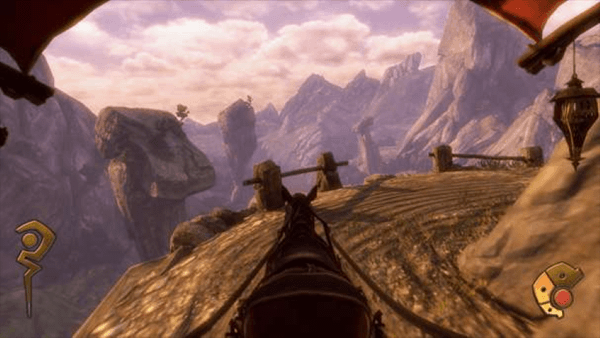
Much has been made of your relationship with your horse in this game and
you’ll find that for the first half an hour you’ll feel like you’ve
popped in the wrong disc and are playing ‘HorseSim 3000’. A large chunk
of the introductory missions revolve around learning to steer your cart,
grooming, healing and feeding apples to Seren.
Gabriel has been riding Seren since he was a small child and that bond
is conveyed through your interactions with her. Quieter moments allow
you to delicately brush the mud from her glistening chestnut haunches or
remove an errant arrow and gently heal the wound with the power of your
gauntlets. The Fable series has always focused on the player
creating a strong rapport with your AI animal companion and The
Journey is no different, leaving one of the biggest impacts of the
entire experience.
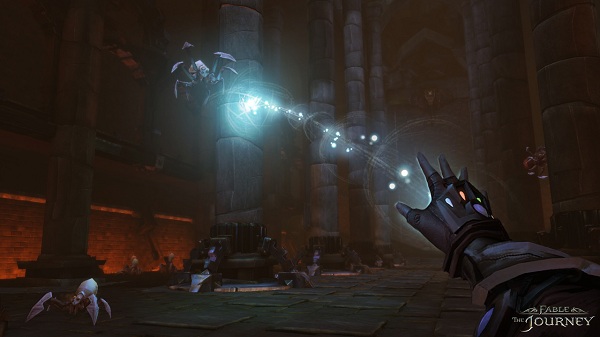
After being instructed to pull up a comfy chair, you start the game with
a lengthy introduction to horse riding. To control your cart, you
basically act as if you have a real set of reigns in your hands. To set
your horse off at a slow trot you simply hold your arms out and crack
your imaginary reigns. Cracking the reigns again makes Seren go faster,
while bringing your arms up to your chest slows her down by pulling the
reigns in.
Steering takes a little bit of getting used to; To go left you pull your
left arm in whilst extending your right and vice versa. It sounds easy
but feels a little off to begin with, although you can rest your arms
when not steering if you get too stiff. These sections, coupled with the
areas where you tend to your horse, are handled extremely well. They
feel intuitive and, whilst not the most exciting areas of the game, the
responsiveness and accuracy of the Kinect is of an exceptional standard
and is one of the better uses of the much maligned motion sensing
peripheral.
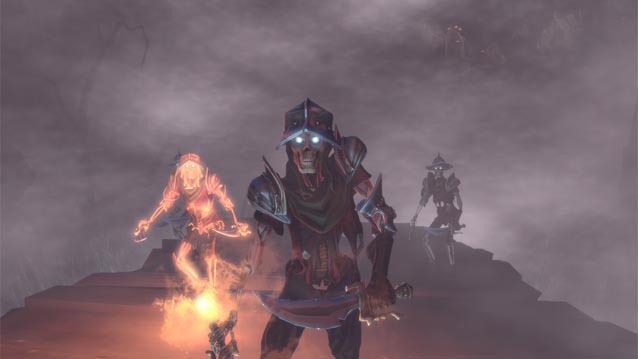
Once you’ve ran into Theresa you’re introduced to the other main
game-play component of the game – Despite Lionhead’s protests that it
definitely isn’t an “On-the-Rails” experience, at the end of the day
Gabriel is automatically moved from area to area whilst flinging spells
at oncoming enemies. Replace the spells with a gun and you’ve got
Time Crisis. Sorry Lionhead, but The Journey is a standard
example of an “On-Rail” Shooter, albeit one with a charming artistic
style not usually associated with the genre.
Moving away from the trio of Might, Skill and Will in the previous
entries combat is solely magic based. Equipping your gauntlets with a
spell each, you lift your hand up and thrust it out towards the screen
from the shoulder as if you were throwing a real fireball; with multiple
upgrades and a useful feature called Aftertouch where you can manipulate
the course of a spell after it’s been fired, when the tracking works you
effectively feel like you’re a super-powered magic machine right in the
thick of the action.
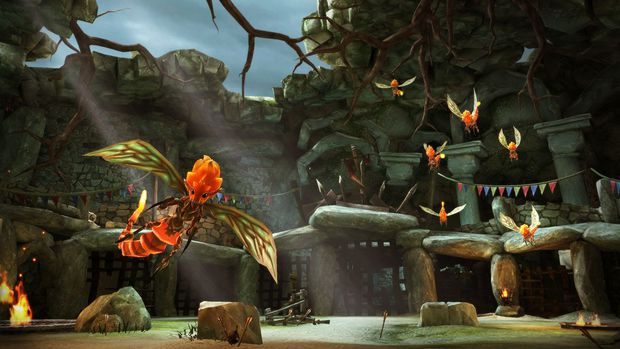
Unfortunately the Kinect registering your movements accurately becomes a
real problem. These sections of the game are some of the most
frustrating experiences I’ve ever had, constantly trying to shoot a
lightning bolt at an oncoming Goblin and helplessly watching it
continually hit a pillar on the upper left corner of the screen.
Situations such as this occur all too frequently and really dampen your
experience, especially during sections of the game that ask you to aim
and hit specific targets; you end up frantically pumping your open palms
at the screen, relying on luck to get you through the area before you
lose your patience and chuck ‘Portal 2’ back in. Blocking
attacks also turns into a game of chance, with a 50/50 success ratio of
the Kinect reading your movements. If it wasn’t for the presence of
Aftertouch, the lousy tracking would have turned me off the game within
the hour.

The range of motions required to perform actions are inventive and
varied, with a large range of mini-games taking advantage of the
Kinect’s capabilities in order to replicate real world actions, such as
turning a waterwheel or hoisting open a treasure chest. Boss Battles are
fun, with most requiring a deft hand as you juggle through multiple
spells in order to expose and then strike the prerequisite weak spot.
The story also holds up rather well; despite initially appearing to be a
watered down regurgitation of previous plots, The Journey’s
streamlined narrative is even more engaging than that of its
predecessors, never falling into that trap of becoming overly
complicated due to trying to squeeze in too much. The characterisation
is strong and the tangible bond the game manages to build between
Gabriel and Seren (And by proxy yourself and Seren) is an
achievement in of itself, creating the best video game horse I’ve
encountered since Agro from ‘Shadow of the Colossus’. If you need
to take a break from the main action, there’s also a series of
side-quests available.
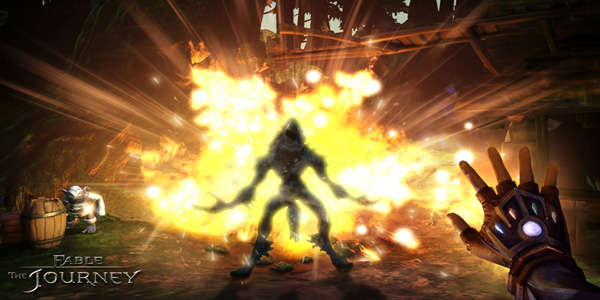
Graphics/Audio
Unlike earlier entries, Fable: The Journey was developed using
Unreal Engine 3; the power of this engine married to Fable’s affably
British visual style makes for some eye candy indeed, clearly
demonstrating that, unlike a lot of other Kinect Games, Lionhead has
really taken great care to try and ensure that this is a top tier
release for the peripheral.
The bright, cartoony visuals are impeccably rendered and minor details
such as the gleam of the individual hairs of Seren’s mane are
breathtaking. The environment, while a little bland at time, is lovingly
rendered to represent the familiar locales of Albion; if you have a
‘Fable 3’ save-file, environmental changes made by your character
carry across to The Journey, ensuring that this world is still
your Albion. The artistic direction is quite refreshing and, while
not as stunningly realistic as the ‘Gears of War’ series, serves
to prove the versatility of the Unreal Engine 3.
Audio quality is also above par, with the distant trill of birds, the
clip-clop of Seren’s hooves as they pound the cracked clay road
underfoot and the scintillating crackle of residual electricity seconds
after you’ve let fly with a spell at a marauding Hobbe all sounding so
precise you’d swear you were in Albion yourself. The music is your
expected sweeping, orchestral chord drenched RPG soundtrack. Whilst
effectively evoking the mood of the world, nothing really sticks in the
mind once the console is turned off. The Voice acting is also of a high
calibre, with Pythonesque accents and witticisms delivered
perfectly.
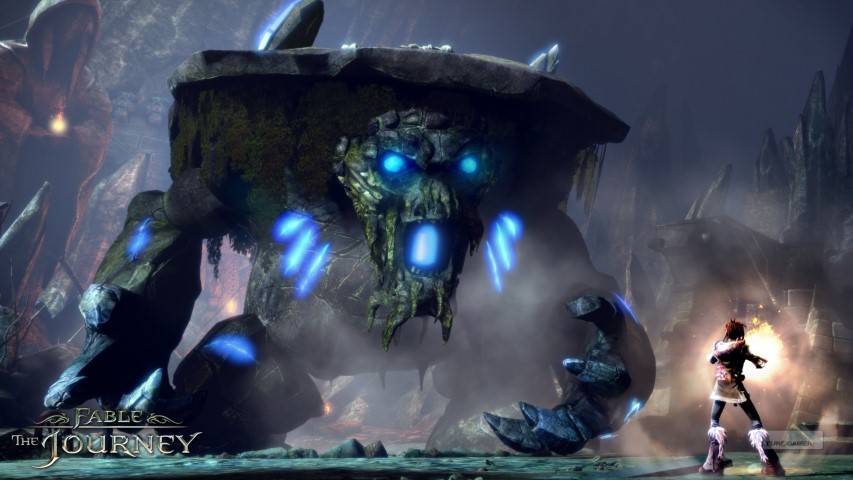
Final Level
Retaining the charismatic humour and visual style of the RPG’s,
Fable: The Journey shouldn’t be classified as a spin off; resting
quite comfortably in the Fable canon, “On-Rails Horse-Em-Up” The
Journey is a worthy addition to the series.
As
“Scream-At-The-TV-And-Then-Curl-Up-In-The-Foetal-Position-Sobbing-Uncontrollably”
infuriating as the game can be at times, especially when trying to
interact with environmental puzzles with some degree of accuracy,
Fable: The Journey is a rewarding experience and is easily the most
ambitious game I’ve played on the Kinect so far. Rising above many of
the system’s shortcomings, areas of the game may fall into some of the
same traps many developers find themselves in due to the Kinect’s
limited capabilities, but when the game works it provides one of the
most engaging and immersive titles available, inventively putting the
technology to great use.
It’s just a damn shame about that irritatingly inaccurate precision
tracking. |